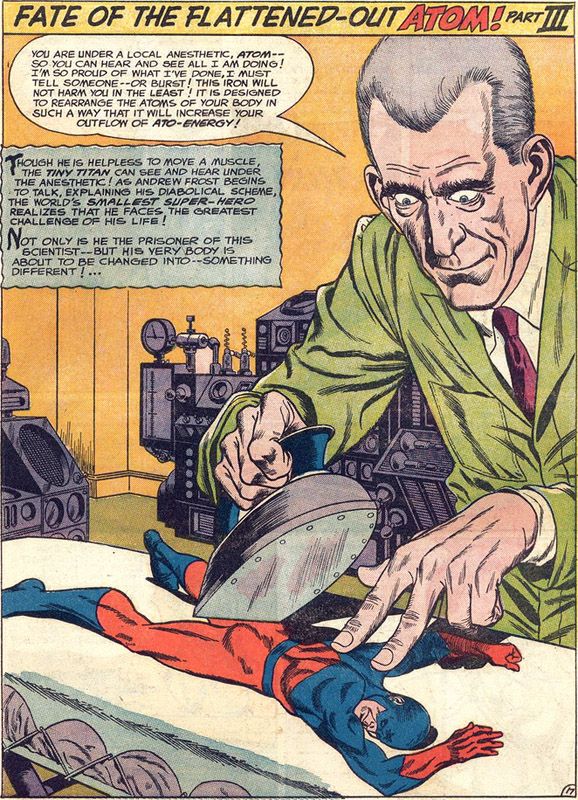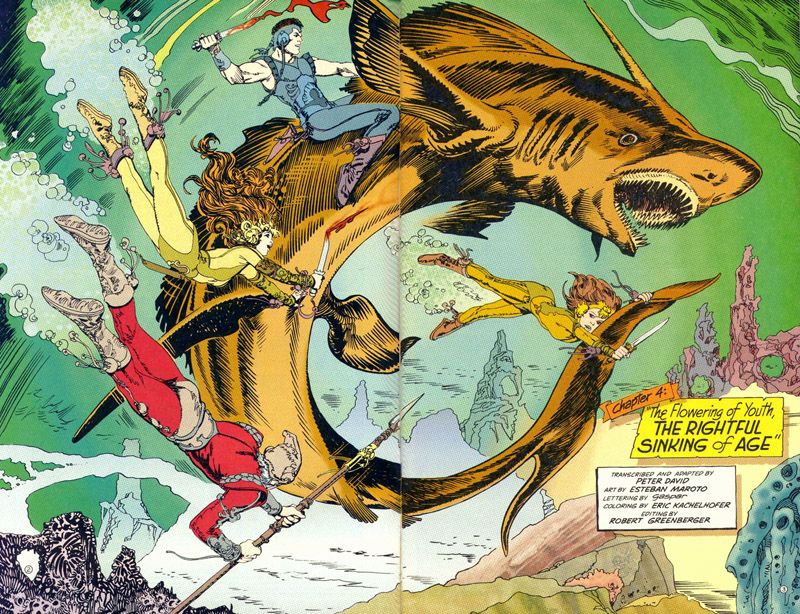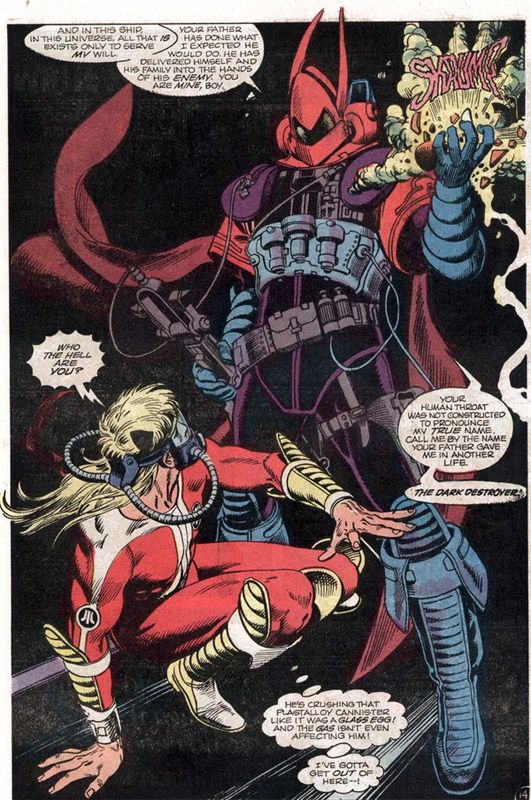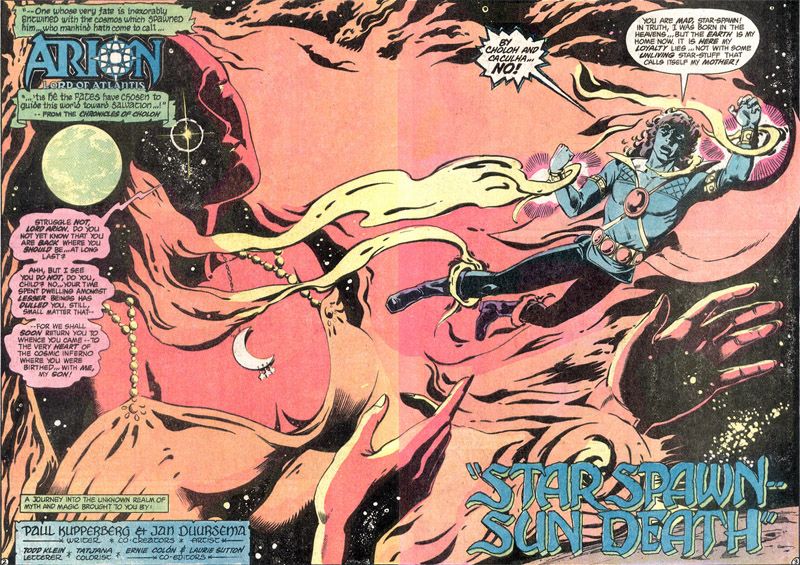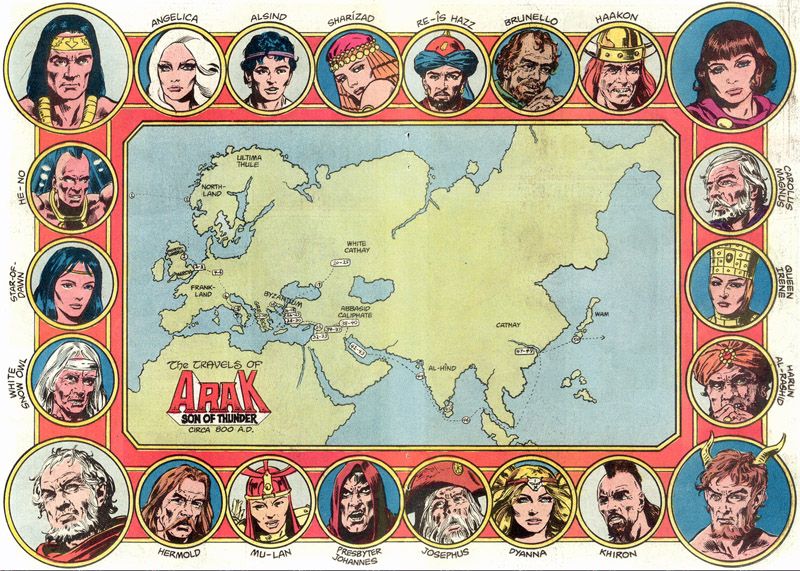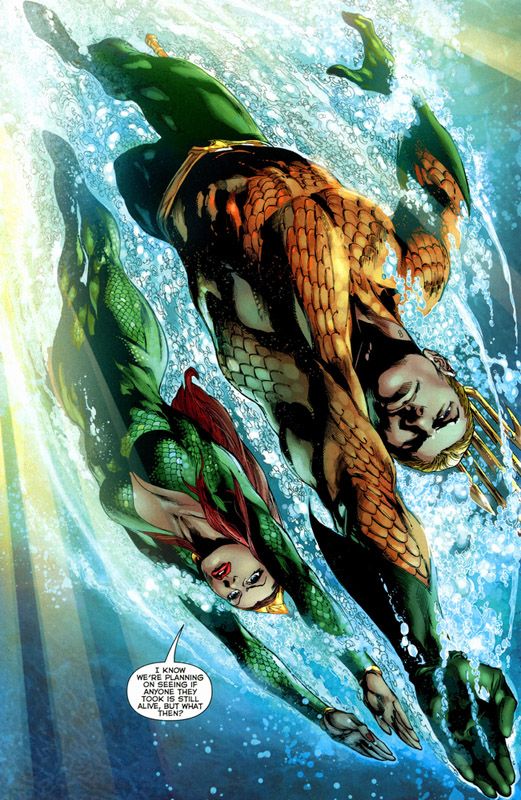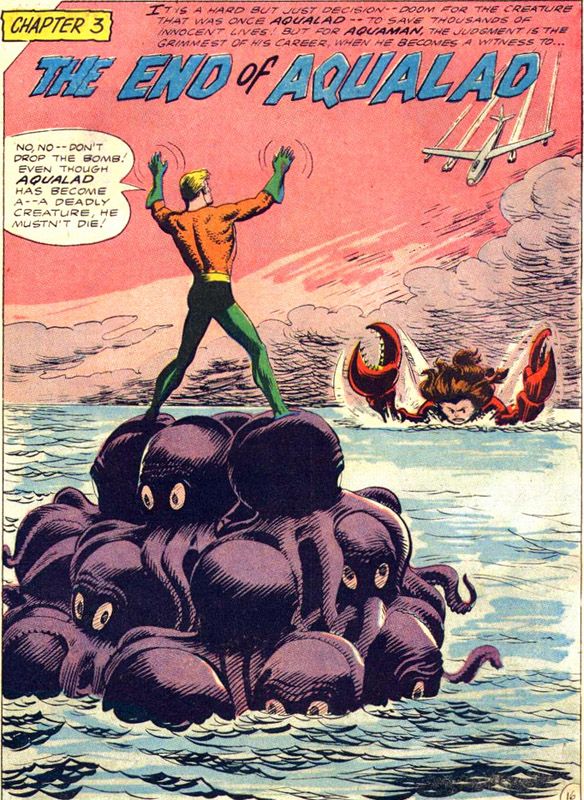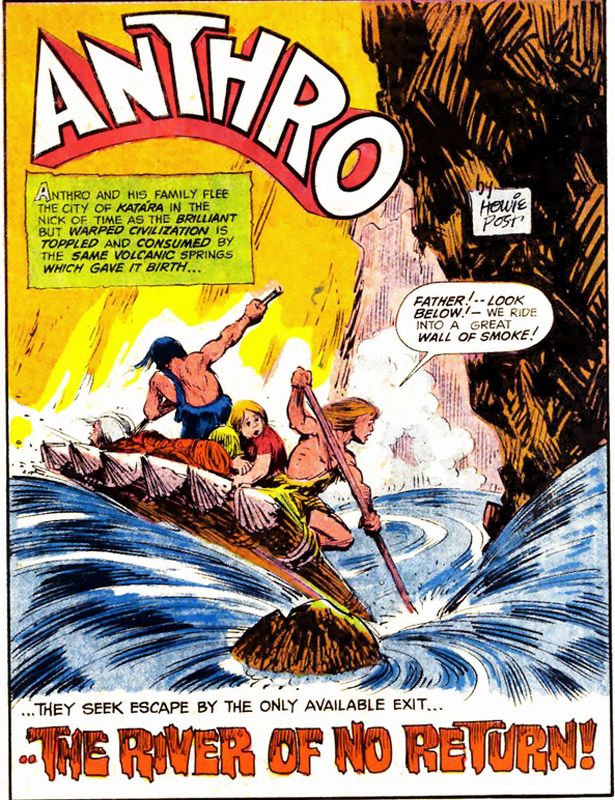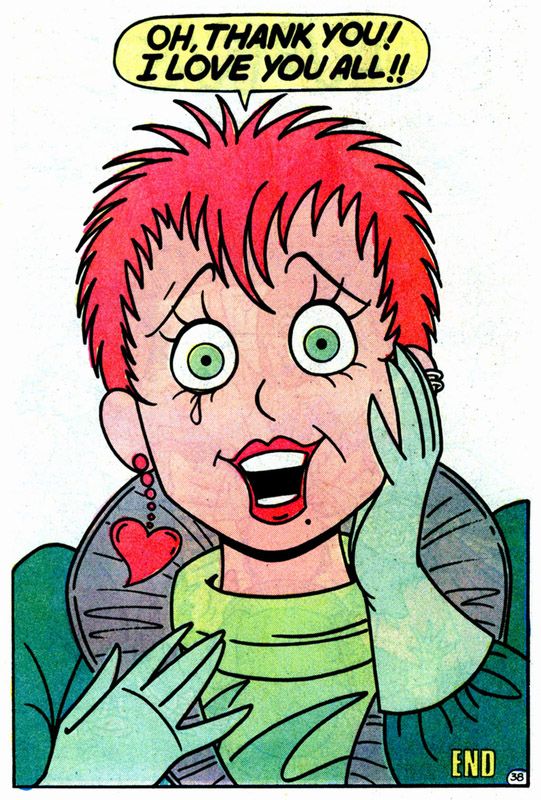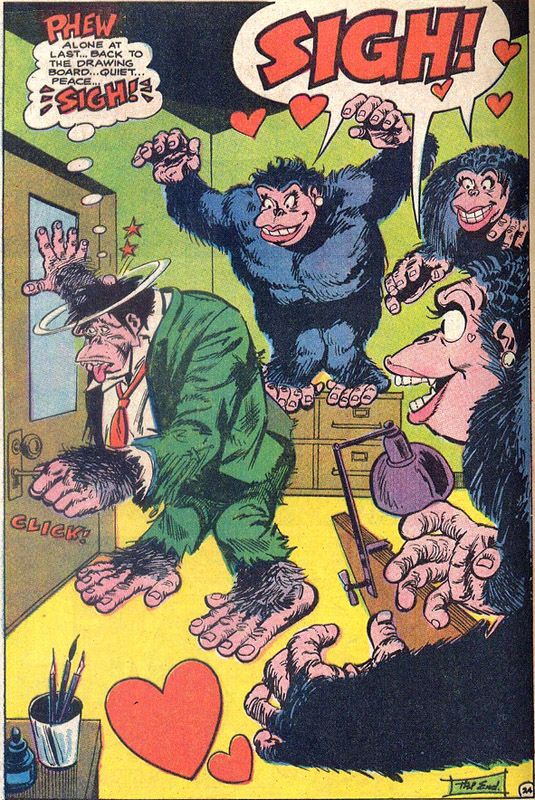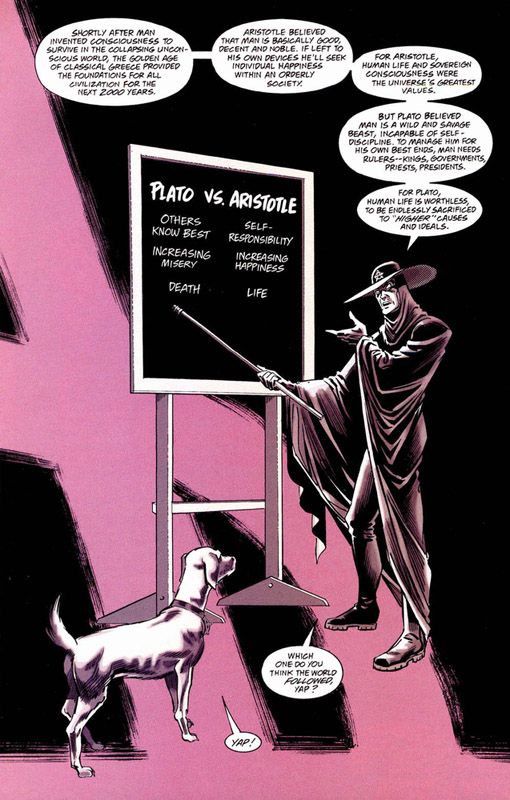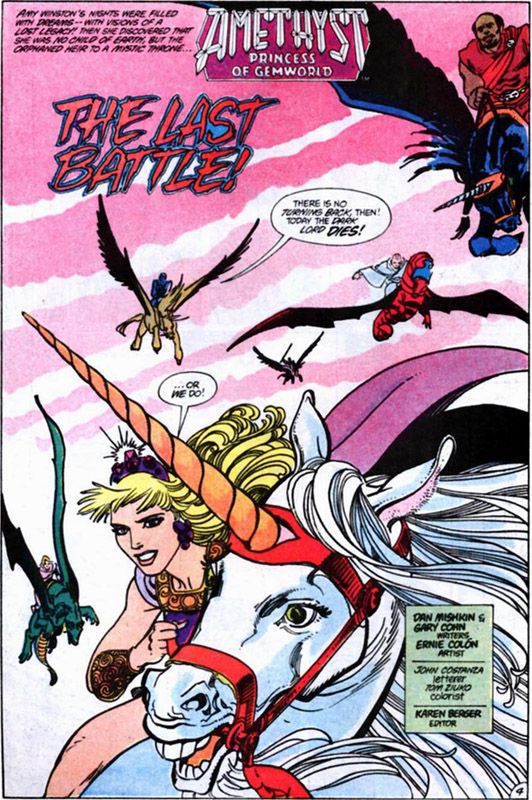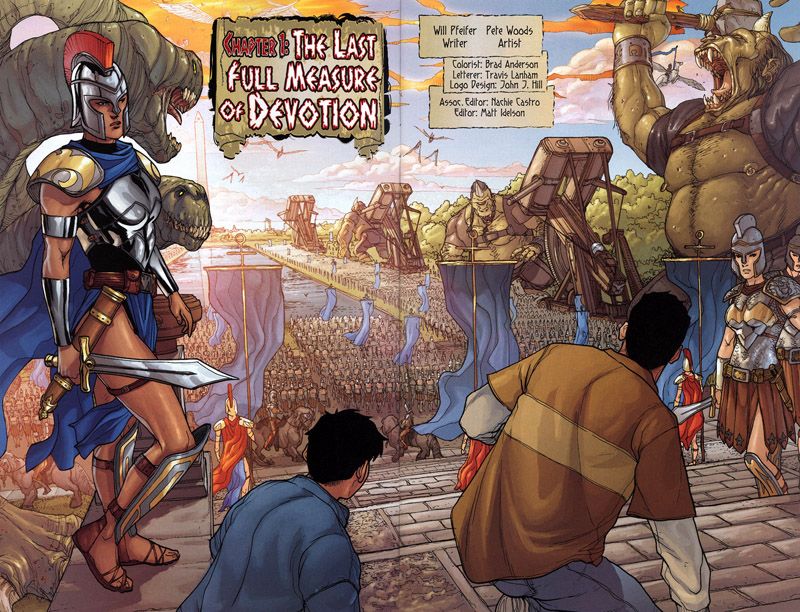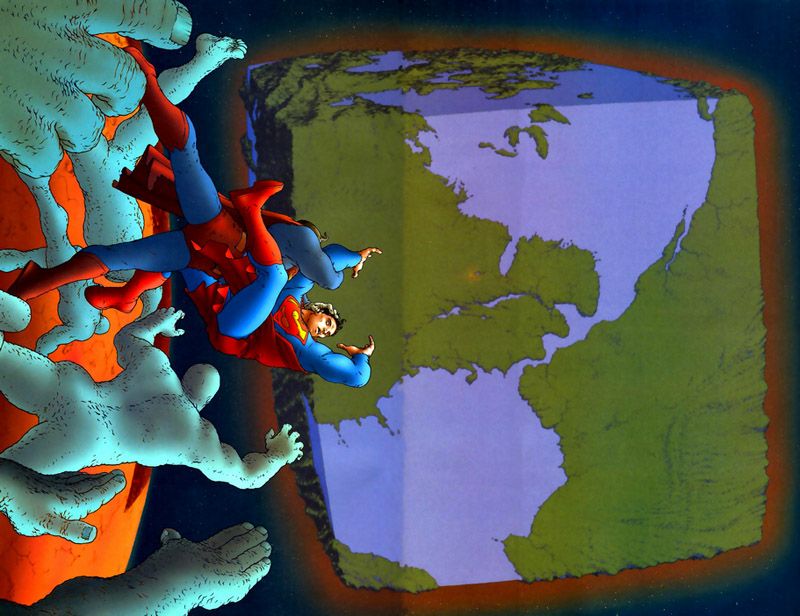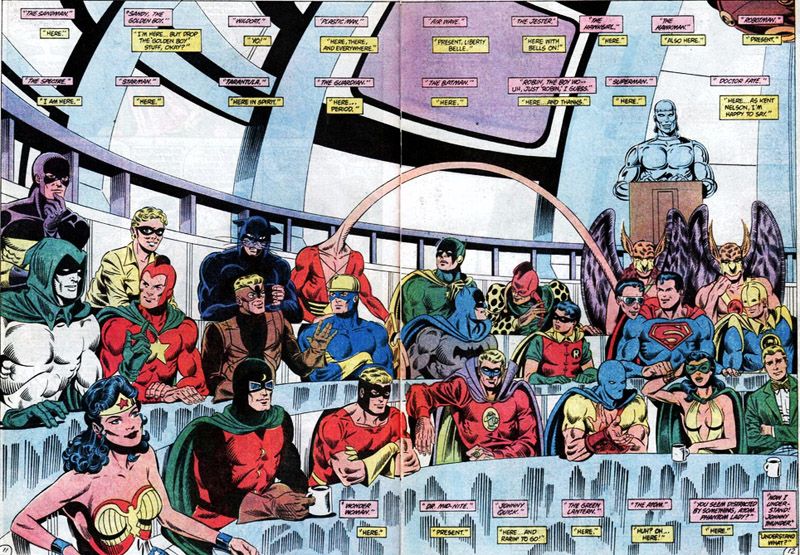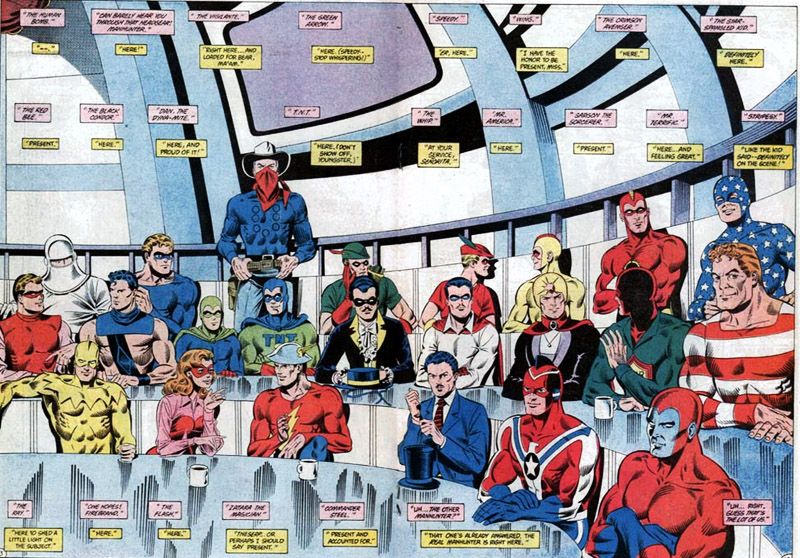
"The Knightfall Boys Reunion Tour" from Azrael vol.1 #39 (DC, 1998) by Dennis O'Neil, Roger Robinson and James Pascoe
When Batman goes his back broken by Bane and he was replaced by Azrael, a character recently introduced in the Batman: Sword of Azrael mini-series. "Azbats" was never meant to stay Batman for long because he was much too bloodthirsty and worse still, he didn't respect the costume and half turned it into some kind of ugly armor with long claws. It was the 90s. Though I think everyone hated him as Batman, it did set Jean-Paul Valley up for a series once he went back to Azrael. And creator Dennis O'Neil took him right up to #100. You don't see that kind of long stint on a character at DC anymore! I never got into it, personally. Never been big on vigilantes with no real limits, but it seems it sold well enough. They did have to change the title to Azrael: Agent of the Bat mid-run so that it would get a little more of that Batman appeal though. I'm sure Azrael's medieval origins and all that was interesting, and O'Neil is good with gritty material, but you can't read everything.

